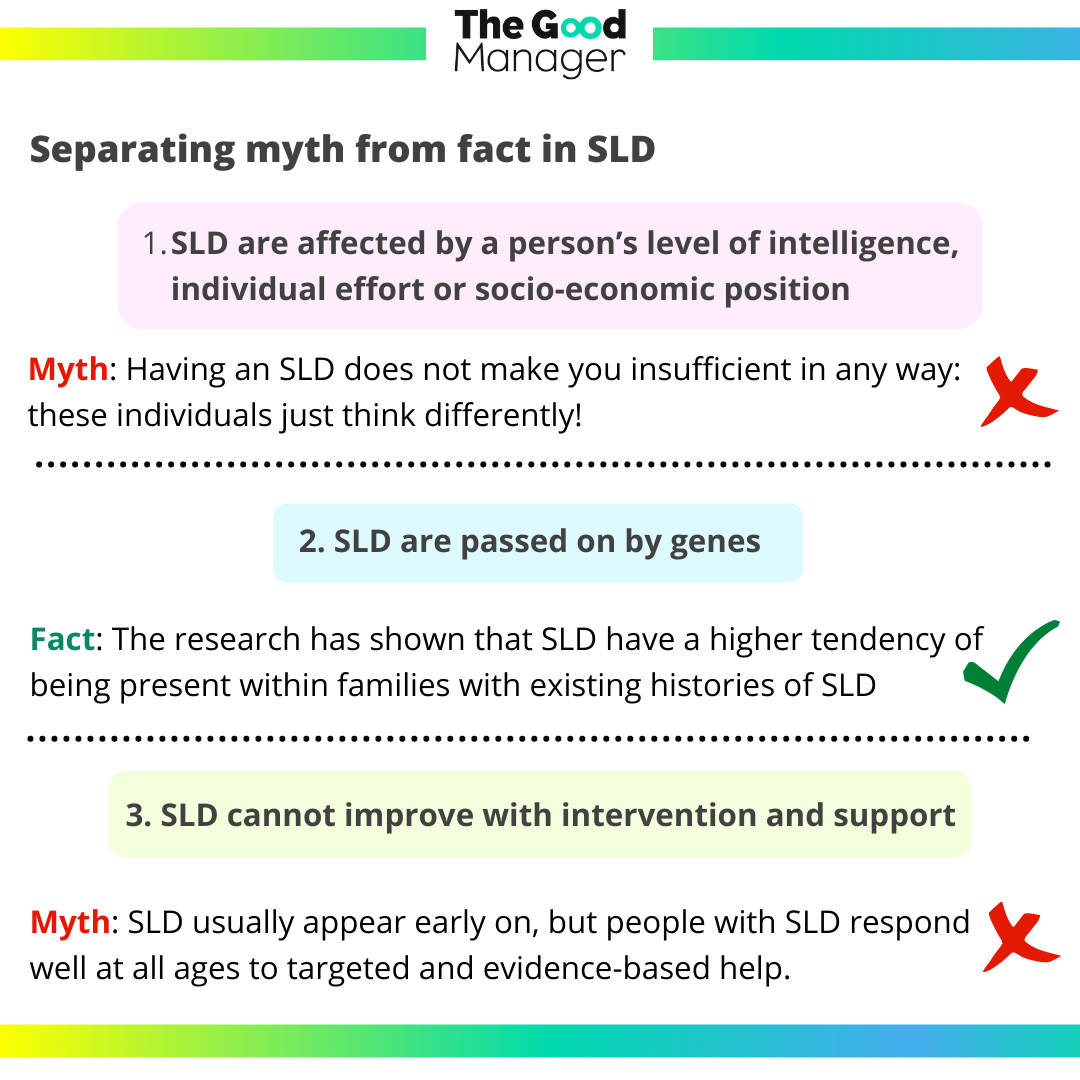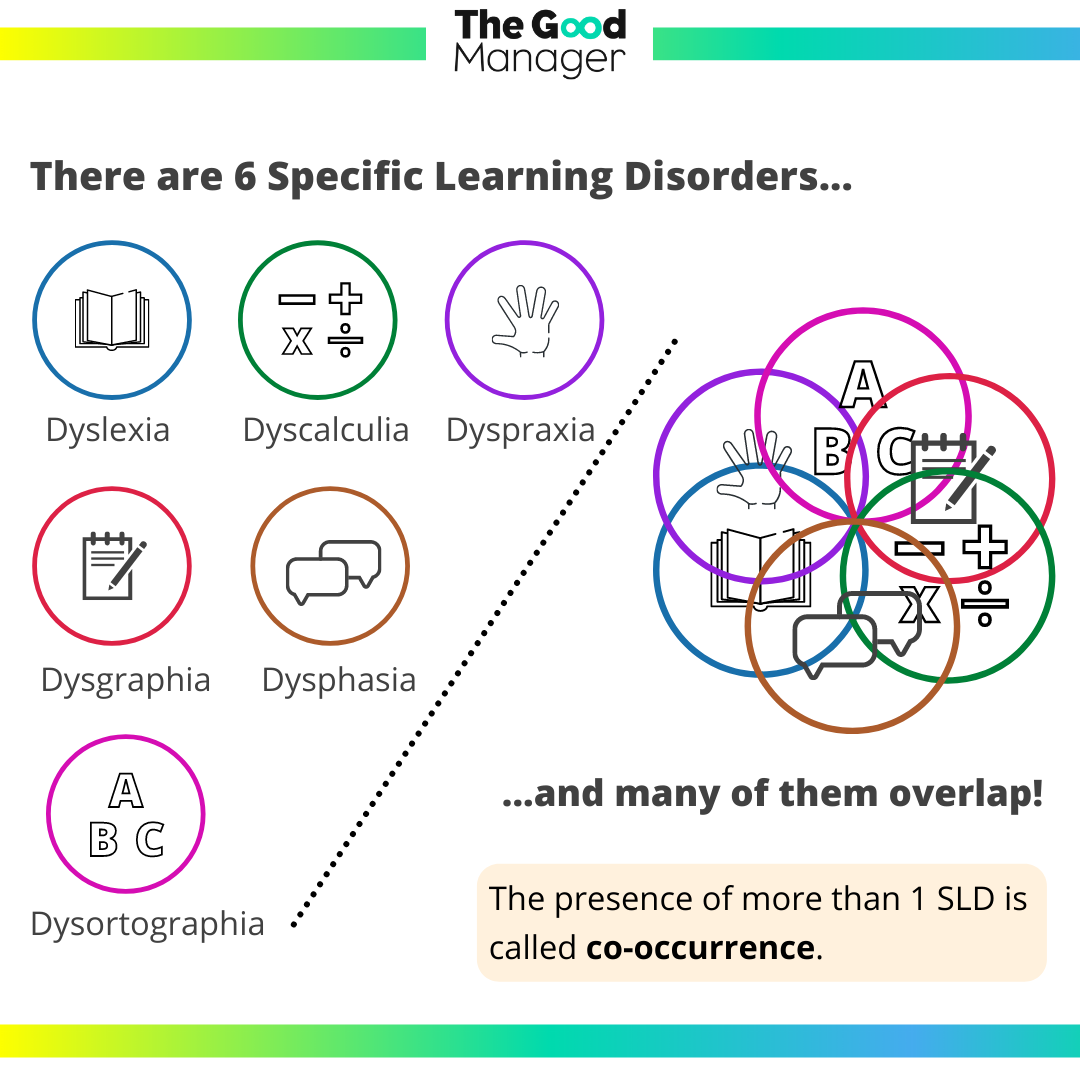Lesson 5Web accessibility for users with SLD
- Notion 29 - What are Specific Learning Disorders and who do they impact on the web?
- Notion 30 - Accessibility issues that users with SLDs can experience online
- Notion 31 - How to make web content accessible for users with SLDs: in theory
- Notion 32 - How to make web content accessible for users with SLDs: in practice 1/2
- Notion 33 - How to make web content accessible for users with SLDs: in practice 2/2
- Notion 34 - Can you spot what makes these web pages accessible (or not) for users with SLDS?
- Notion 35 - Review of the main concepts
Notion 29
What are Specific Learning Disorders and who do they impact on the web?
Target skills
What are Specific Learning Disorders?
Specific Learning Disorders (SLDs) are neurodevelopmental disorders, which means they affect how the brain receives, stores, and expresses information. For SLDs in particular, this manifests as difficulties with processing and learning.
How does this impact the daily lives of individuals with these disorders? People with SLDs may have difficulties with:
- memory
- writing
- reading
- attention and staying focused (either an inability to ignore distracting visuals/sound or a greater sensitivity to visuals/sound in busy environments)
- problem-solving
- time management
- computation (for example, calculations)
- organisation

Transcription:
Separating myth from fact in SLD
1. SLD are affected by a person’s level of intelligence, individual effort or socio-economic position
Myth: Having an SLD does not make you insufficient in any way: these individuals just think differently!
2. SLD are passed on by genes
Fact: The research has shown that SLD have a higher tendency of being present within families with existing histories of SLD
3. SLD cannot improve with intervention and support
Myth: SLD usually appear early on, but people with SLD respond well at all ages to targeted and evidence-based help.
The scope of these learning disorders includes:
Dyslexia: difficulties with reading and language-based skills (the most common SLD)
Dysgraphia: difficulties with writing expression, handwriting ability and fine motor skills
Dysortographia: difficulties with spelling.
Dyspraxia: difficulties with physical coordination, movement, language and speech
Dyscalculia: difficulties understanding numbers and learning maths calculations/formulas
Dysphasia: difficulties with oral expression and understanding spoken words

Transcription:
There are 6 specific learning disorders and many of them overlap!
The presence of more than 1 SLD is called co-occurence.
So, which web users are affected by SLDs?
According to figures from the European Dyslexia Association (EDA), between 9% and 12% of people have learning disabilities in Europe. Unfortunately, SLDs are most often a hidden disorder. Therefore, these users are less likely to have a formal diagnosis of a disability than individuals with physical and sensory difficulties.
Because of its invisibility and a lack of understanding, developers often fail to design web content that is accessible for people with this disorder.